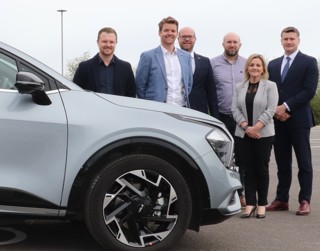Symphony is set to make major carbon emission savings on its car fleet after introducing plug-in hybrid models to its choice list.
The manufacturer of fitted kitchen, bedroom and bathroom furniture, has worked with its leasing partner JCT600 Vehicle Leasing Solutions (VLS) to resolve any challenges in moving the all-diesel fleet to a more environmentally-friendly alternative.
Symphony launched a new choice list in April this year and since then it has ordered 58 vehicles, of which 55% have been a PHEV.
The order bank for both the PHEVs and diesel vehicles has a combined CO2 average of 71g/km, 43% lower than the current fleet average of 125g/km.
John Dunsford, group finance director at Symphony, said: “Symphony is committed to having a strong EV offering within our car fleet.
“JCT600 VLS, as a long-standing partner, has provided us with clear advice and support in managing this transition.”
Symphony estimates around 85% of its 320-stong fleet will be PHEVs within two years.
As part of the process, JCT600 VLS uses its car tax software to model the wholelife cost of the vehicles to Symphony.
This, combined with tax benefits and fuel costs, the vehicle funding and management solutions provider was able to create a new choice list across all grades, offering multiple plug-in options per band at no extra cost.
As well as the carbon savings, it also resulted in a more premium choice of vehicle and significant tax savings for employees.
Justin Ball, key account manager at JCT600 VLS, which was named leasing company of the year (up to 20,000 vehicles) in the 2021 Fleet News Awards, added: “Symphony, like many businesses, had reservations on how an EV fleet could work.
“However, by working in partnership we were able to work through any challenges and the results speak for themselves with an incredible 43% reduction in carbon emissions so far.
“While an all-EV fleet may be on the horizon, it’s not right for all fleets right now.
“Government incentives and infrastructure investment, along with more vehicle availability, is certainly making the transition much easier for fleets to start considering the move.”























Login to comment
Comments
No comments have been made yet.